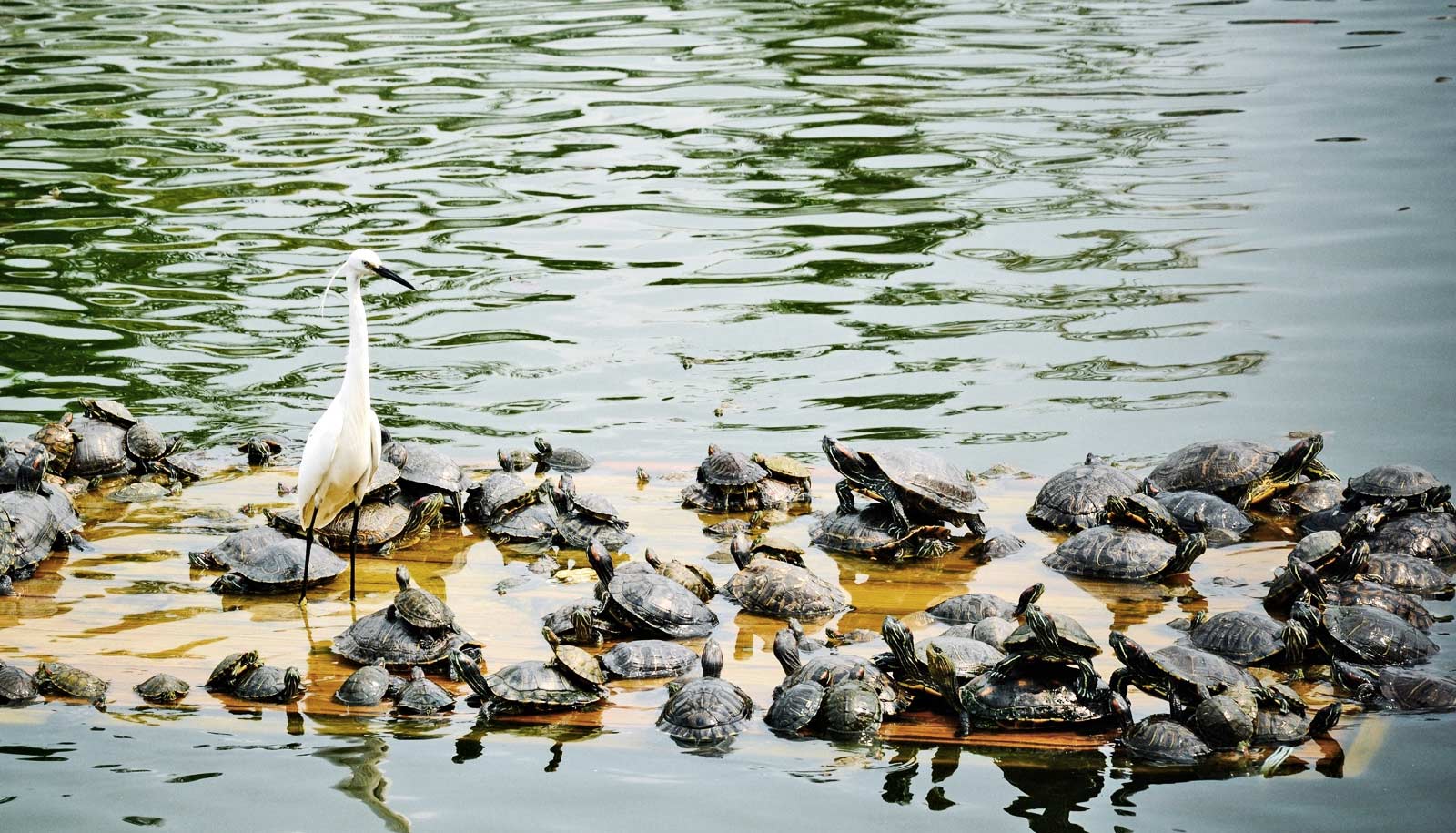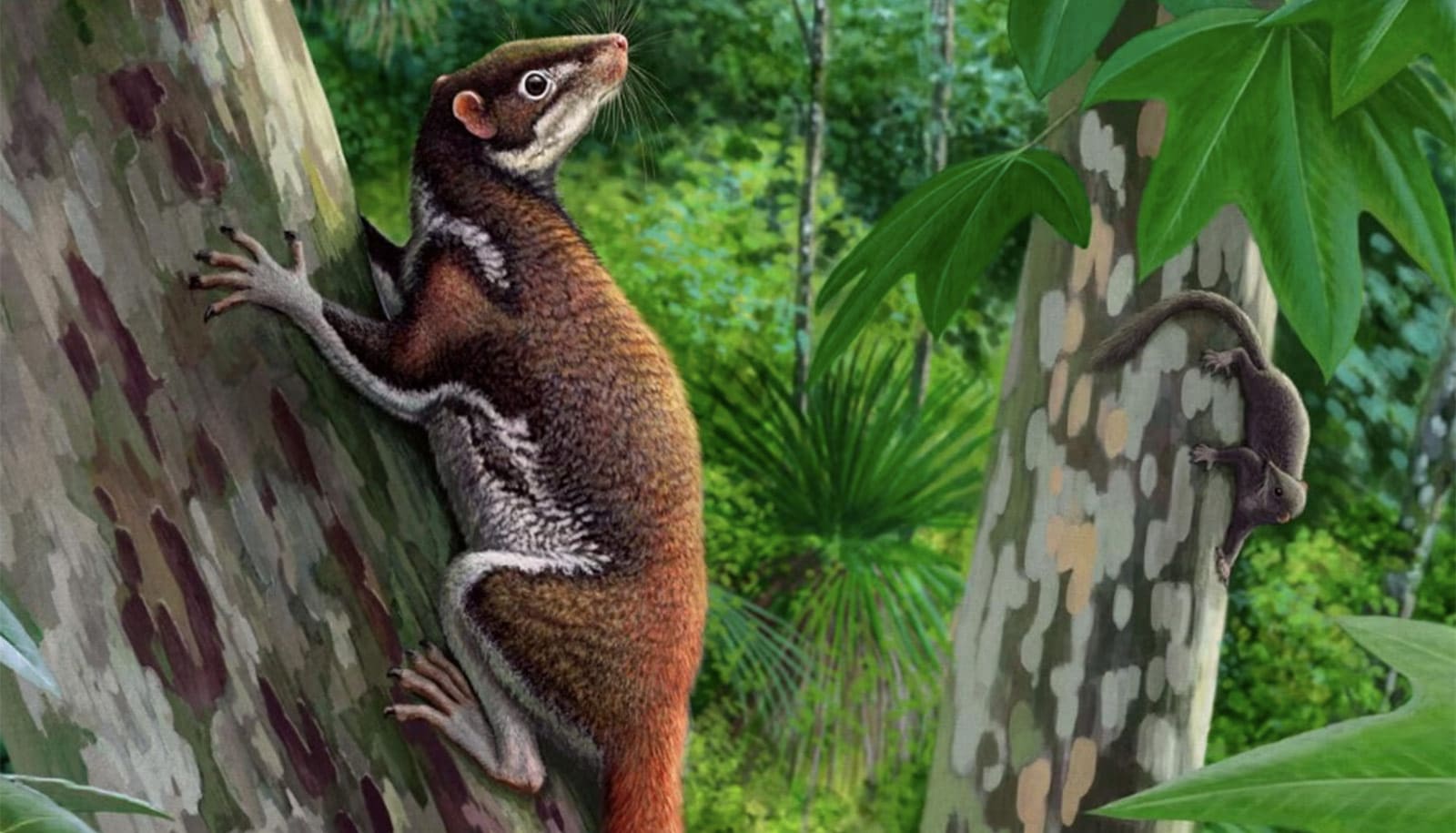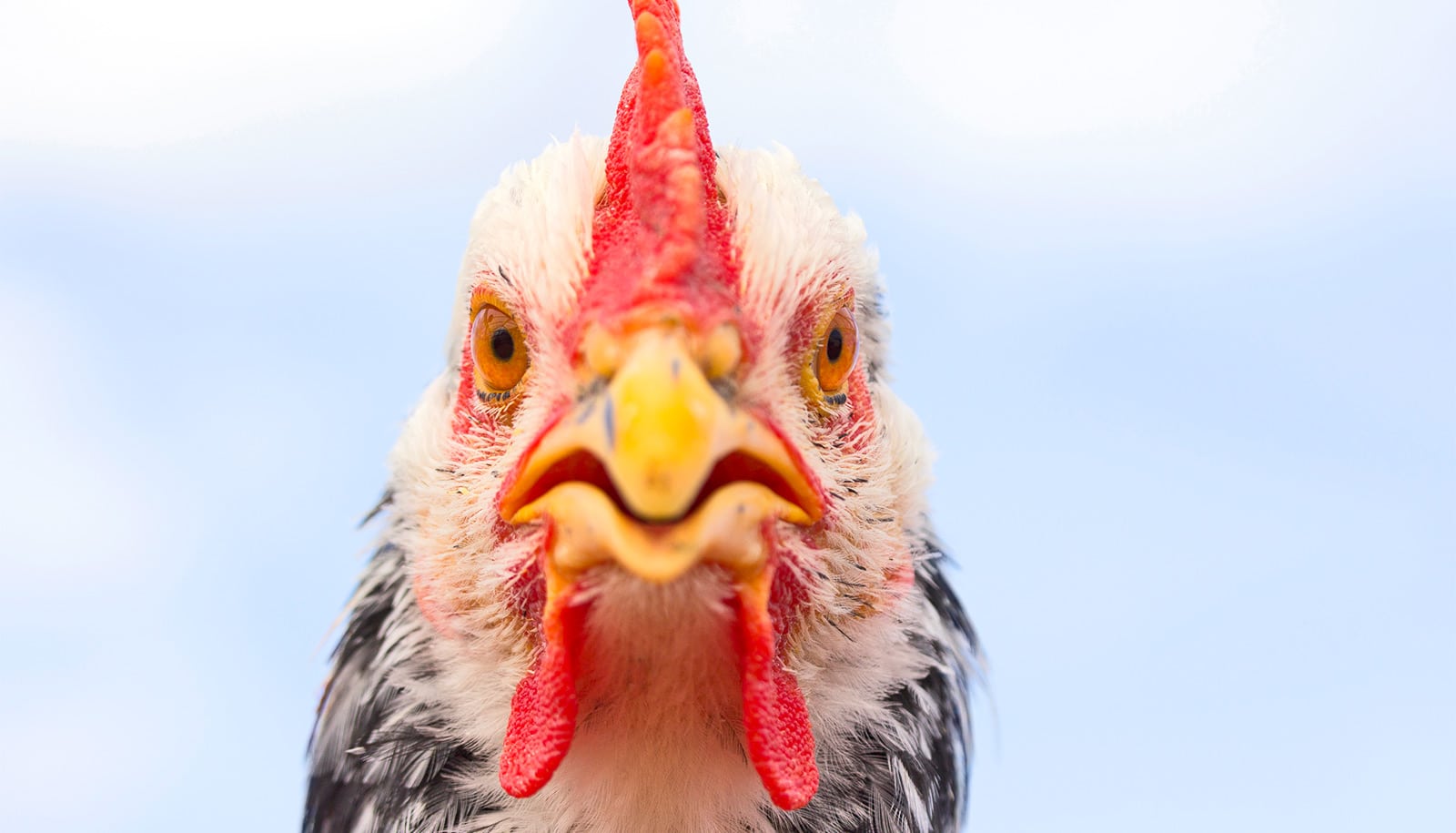Scientists have reconstructed the likely genome structure of a common ancestor of birds, turtles, and dinosaurs.
The research, published in Nature Communications, suggests the chromosomal structure, known as a karyotype, in early dinosaurs is similar to that of most present-day birds.
Working backward from the living relatives of dinosaurs can shed light on traits the fossil record can’t illuminate, says Nicole Valenzuela, a professor of ecology, evolution, and organismal biology at Iowa State University and coauthor of the study.
“Some traits can be observed through fossils and some can’t,” Valenzuela says. “The genome structure is one that can’t be preserved, so we have to get creative if we want to figure that out.”
The researchers compared commonalities between birds and turtles in how their chromosomes, or thread-like structures in living cells that contain an organism’s DNA, are organized. Those commonalities likely existed in an ancestor of birds and turtles—a primitive, lizard-like creature that lived roughly 260 million years ago. The dinosaurs sprang from that same evolutionary branch about 20 million years later, meaning they would carry the same karyotype.
That large-scale arrangement of many chromosomes remained intact from that common ancestor over the course of hundreds of millions of years into present-day birds and turtles, which probably means this organization has critical functions for those organisms.
“That conservation, to me, is remarkable,” Valenzuela says. “Things are usually conserved over that scale of time because they’re important.”
Valenzuela joined the research group, which researchers at the University of Kent in the United Kingdom led, because of her experience with turtle genomes. Her previous work focused on temperature-dependent sex determination, or the way fluctuations in temperature during embryonic development influence the sex of some species of turtles, and more recently on the evolution of turtle chromosomes.
Due to the wide variation of traits among turtles, birds, and dinosaurs, Valenzuela says it’s impossible to tell if the similarities in karyotype contribute to any specific feature of any specific species. In fact, it’s possible that more subtle changes to the structure or DNA sequences within chromosomes helps to facilitate the enormous diversity displayed by the animals in the study.
“We need to look deeper to figure out the basis of the traits that make turtles, birds, and dinosaurs so different from each other,” she says.
Source: Iowa State University



